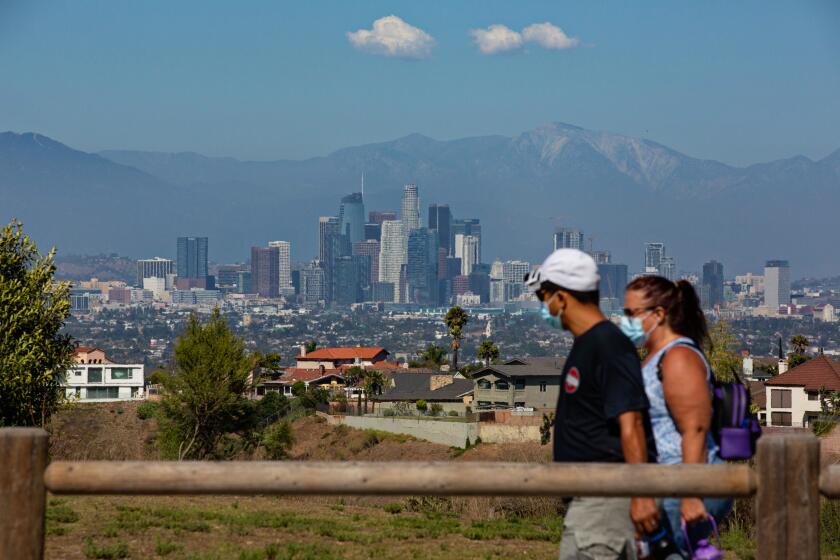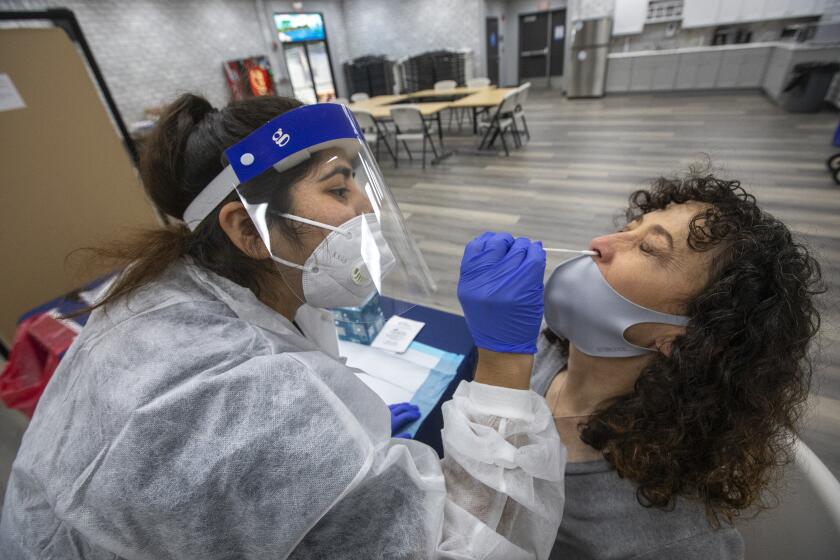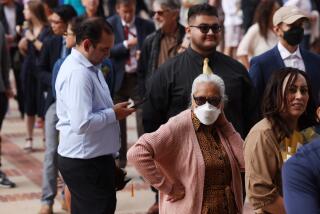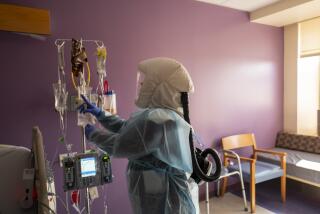Young adults still driving COVID-19 cases in L.A. County
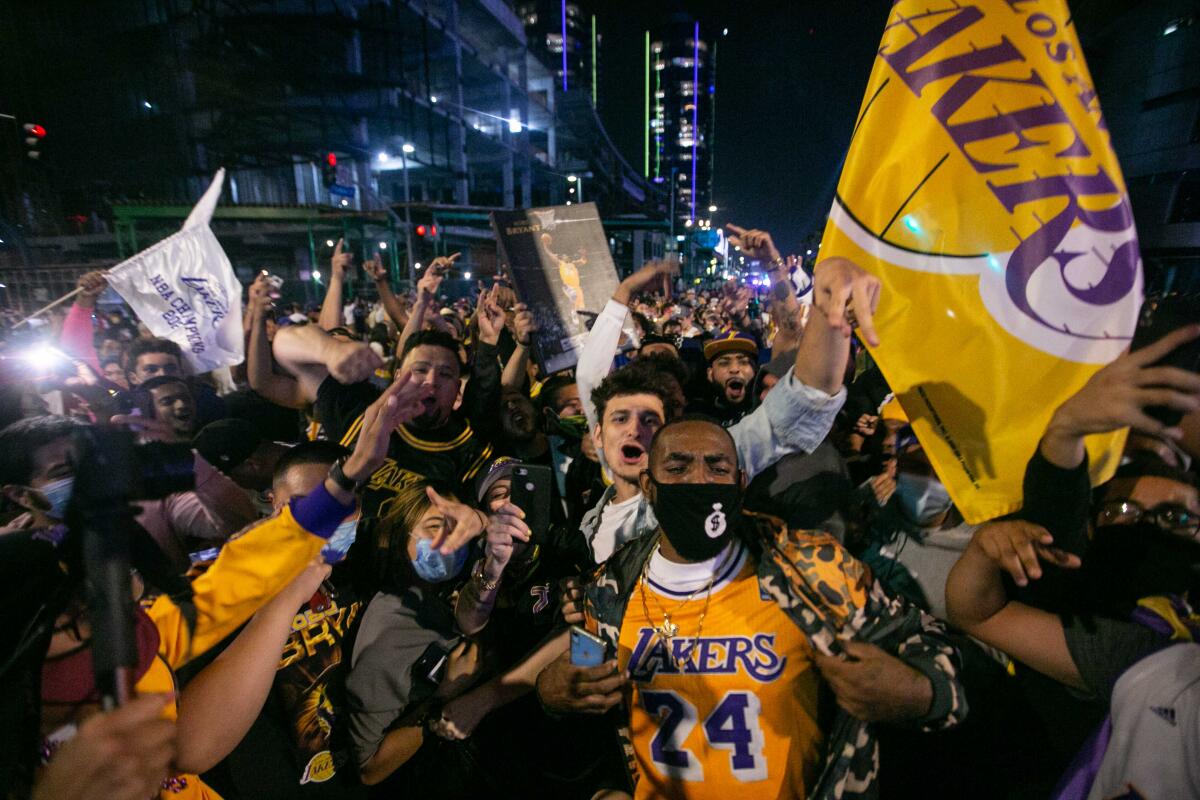
Adults under age 50 continue to be a significant driver of Los Angeles County’s stubbornly high coronavirus case rate, accounting for almost three-fifths of confirmed infections, officials said this week.
While this is not a new development ‚ÄĒ those between 18 and 49 have had the highest number of cases throughout the COVID-19 pandemic, according to the L.A. County Department of Public Health ‚ÄĒ officials said the continued prevalence of infections among this group underscores that the disease can strike people of all ages and that personal decisions on adhering to prevention measures will dictate when the county can further lift restrictions on businesses and public facilities.
Roughly 58% of the county’s cases have been among people in that age group, according to public health data.
‚ÄúIt‚Äôs our younger groups that are keeping our case counts high, but we also see that people of all ages can, unfortunately, become tragically ill, and some people will pass away,‚ÄĚ L.A. County Public Health Director Barbara Ferrer said.
California health officials prepare for a potential third surge of coronavirus cases fueled by essential workers and young people.
While those who fall seriously ill still tend to be older, patients between 18 and 29 now account for more than 10% of hospitalizations countywide ‚ÄĒ double the rate seen in mid-May ‚ÄĒ Ferrer said.
About 722 COVID-19 patients were hospitalized in L.A. County on Monday.
Officials have previously said that the preponderance of cases among young adults could be because they may be more likely to socialize outside their households, believing their youth will shield them from the disease’s impact.
Of particular recent concern are private gatherings, especially those in which attendees aren’t adhering to physical distancing guidelines or wearing face coverings.
‚ÄúWe still have widespread community transmission,‚ÄĚ Ferrer said. ‚ÄúThat means it‚Äôs easy for people to get infected when they are gathering, even in small groups.‚ÄĚ
Even if those infected do not suffer severe symptoms, their continued circulation of the virus will block L.A. County from moving toward a wider reopening, health officials warn.
The county remains in the strictest category of the state‚Äôs four-tier reopening plan ‚ÄĒ Tier 1, or purple ‚ÄĒ because it continues to report more than seven new cases per 100,000 residents each day. That means schools, many businesses and public facilities either cannot operate indoors or can do so only at a strictly limited capacity.
The latest maps and charts on the spread of COVID-19 in California.
Unless that case rate drops, the county won’t be able to move into a less restrictive tier.
‚ÄúWe cannot afford to have more cases here in L.A. County. We are still in the purple tier because we have widespread community transmission,‚ÄĚ Ferrer said. ‚ÄúI know people are impatient, and I know people want to get us to a place where everyone gets back to school, but ... we would need to get to Tier 2, and that means a concerted effort over the next upcoming couple of weeks to reduce our rate of community transmission. That‚Äôs going to take all of us.‚ÄĚ
State officials Tuesday announced plans to partner with L.A. County ‚ÄĒ as well as Riverside and San Bernardino counties ‚ÄĒ in an effort to reduce community transmission. Strategies could include increasing testing capacity and availability, providing additional assistance to make it easier for those who have to isolate to do so and supporting business enforcement and education efforts.
‚ÄúThe state is committed to working with all three of the counties to do all that we can to increase efforts to reduce transmission,‚ÄĚ California Health and Human Services Secretary Dr. Mark Ghaly said during a weekly briefing.
Already, there have been roughly 881,676 confirmed coronavirus cases in California ‚ÄĒ the most of any state ‚ÄĒ and 17,012 deaths. More than 289,000 cases and almost 6,900 fatalities have been in L.A. County.
While the number of daily COVID-19 deaths has fallen dramatically in California in the past few months, the state’s death toll has become the third-highest in the nation.
Stemming the local spread is especially important, officials say, as other states contend with new surges of the coronavirus ‚ÄĒ a danger that California faces as well.
‚ÄúThis is what we anticipated, moving into the colder season, moving into the season where more of us are moving inside, moving into a season where more of us begin to mix and come back ... for the holidays,‚ÄĚ Gov. Gavin Newsom said Monday. ‚ÄúThis is an area of obvious and real concern, and that‚Äôs why we‚Äôre being very sober and, forgive me, stubborn about some industries in the state.‚ÄĚ
State officials on Tuesday did release new protocols for theme parks that would allow them to open on a limited basis, provided certain criteria are met.
Ghaly also announced that all personal care services ‚ÄĒ including massage and tattoo parlors ‚ÄĒ will be allowed to resume limited, modified indoor operations, regardless of their county‚Äôs position within the reopening tiers.
However, there are challenges ahead. Based on the latest forecasts, Ghaly said, the state is anticipating a 46% increase in COVID-19 hospitalizations over the next month, from the current 2,241 to a projected 3,271.
While not as severe an increase as previously projected, it‚Äôs ‚Äústill an area of concern, and why we continue to push the different advice and risk-reducing behaviors that we talk about on a continual basis,‚ÄĚ Ghaly said.
Chief among those: Wear a face covering in public, keep a healthy distance away from people you don’t live with, and regularly wash your hands.
Disneyland, Knott’s Berry Farm and other large California theme parks won’t open immediately under protocols announced Tuesday.
Another challenge facing Los Angeles County is the number of people who do not cooperate or connect with contact tracers, whose job it is to collect information so health officials can identify possible infection sites and notify those who have shared space with an infected person so they can take precautions to avoid exposing others.
Between 65% and 70% of confirmed cases and contacts have completed interviews since September, according to Ferrer. That means roughly a third have not.
‚ÄúThis does continue to thwart our efforts to reduce community transmission, since a large number of people are missing information about what they need to do to protect themselves and others from spreading the virus,‚ÄĚ she said.
Identifying and informing those who have come into contact with a confirmed case is essential, public health officials say, because those people may unwittingly become vectors for the virus ‚ÄĒ carrying it with them even if they‚Äôre not experiencing symptoms.
‚ÄúThis virus is very present in our communities, at our work sites and in all of our beautiful public spaces,‚ÄĚ Ferrer said. ‚ÄúProtecting yourself and others reduces transmission of COVID-19. It does prevent people from becoming seriously ill, and it saves lives.‚ÄĚ
More to Read
Sign up for Essential California
The most important California stories and recommendations in your inbox every morning.
You may occasionally receive promotional content from the Los Angeles Times.
